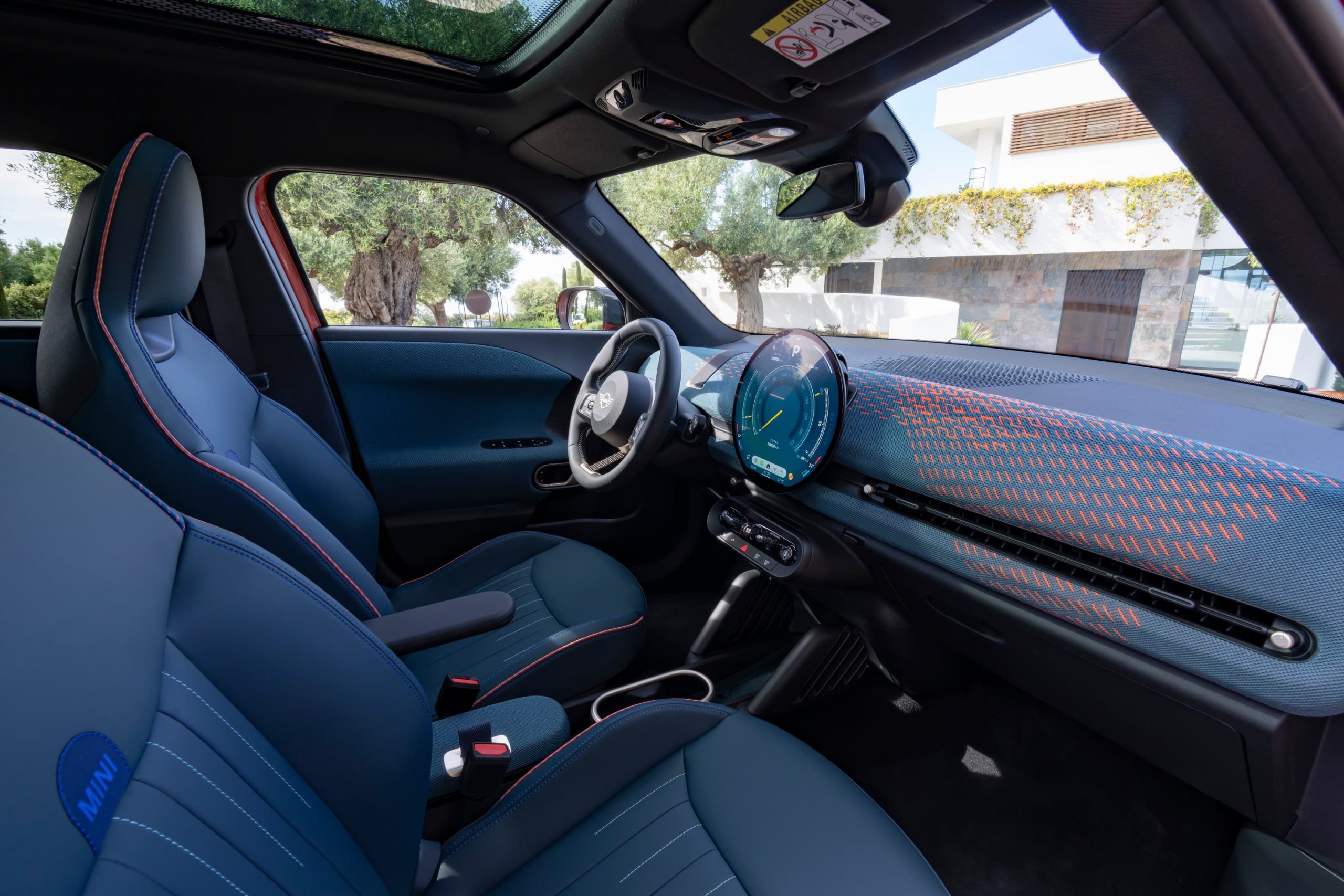The firm is committed to producing solely EVs by the end of the decade, and to get there, sustainable fabrics will play a big part in that role.
Mini is looking to ditch ‘traditional’ interior materials for its cars in favour of ‘greener’ alternatives.
With an expanding range of vehicles – including the new Aceman which has joined the firm’s line-up of EVs – the brand is furthering its commitment to lower CO2 production in the future. The wider BMW Group has already announced plans to establish ‘a climate-neutral business model over the entire value chain by the year 2050’.
One way that the firm aims to reduce its CO2 emissions is in the material manufacturing process and is looking to focus on the use of 2D knitted materials instead of traditional leathers. To promote a fully circular process, Mini also plans to have car interiors that are completely recyclable once the vehicle reaches the end of its useful life.
The new Aceman B-segment SUV is the latest addition to the firm’s line-up that focuses on a sustainable interior.
Kerstin Schmeding, head of Mini’s colour and trim told the PA new agency, she said: “I think for the Aceman, it has a really fresh, new and spectacular design. We also incorporated a new material language which is based on a knitted fabric which is made from recycled polyester and we’re moving towards a leather-free interior. It’s a very exciting journey for the team here at Mini and for the brand looking into the future.”
Furthermore, the 2D knitted material on the Aceman is found on the dashboard, door cards and in various cubby spaces. The Countryman SUV and Cooper Hatch also adopt the same interior designs and materials, too.
By Cameron Richards

